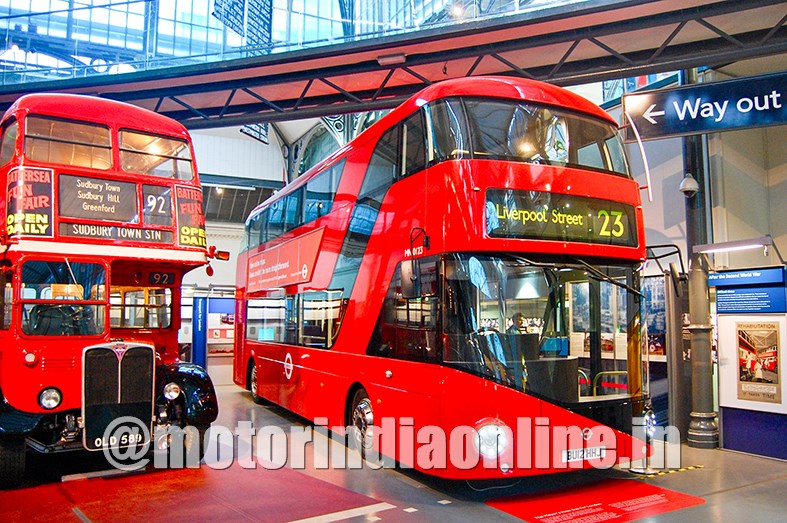The Big Red
London’s legendary double-decker buses tow us back in time and they also hold the cue for the future of twin-storey buses
My passion for automobiles began with toy cars and scale models since my early childhood. They were not just playthings, but intriguing objects kindling great curiosity that helped shape an inquiring mind towards those real-world machines they represented. They have also left an ever-lasting nostalgia in me, which continues to nourish my passion till date. One such curio that I distinctly remember was a red double-decker bus – it was my earliest embarkation into the cult of double-deck buses! Years later, I came to know that the scale model I had was that of AEC Routemaster of the 1950s, the quintessential red double-decker that remains widely acknowledged as an enduring icon of London, just as Big Ben or black cabs.
Perhaps the most famous public service vehicles of all time, the big red buses are an exemplar of fine engineering and motoring legacy of the British that has stood the test of time, greatly influencing the evolution of double-deck commuter buses across the world, including India. The idea of a double-decker precedes the history of motor buses. Horse-drawn, double-deck ‘omnibuses’ existed in London since 1850s, which were replaced by battery-electric, double-deck and trolley-buses (nicknamed as ‘diddlers’) at the beginning of the 20th century. The double-deckers proliferated in the UK as operators favoured their higher seating capacity and ability to manoeuvre through the narrow streets and tight corners of London.
The concept got so ingrained in the motoring culture of the British that they couldn’t let that go even a century later. Around World War II, the RT family of diesel-powered double-deckers, predominantly AEC Regents and Leyland Titans, were relied on to replace trams and trolley-buses in the city. The post-war period in the 1950s was a turning point in the design of the London bus with the birth of the Routemaster front-loaded engine double-deckers, built by Associated Equipment Company (AEC) to exacting standards of London Transport. A pioneering design it was, with a bonneted ‘half-cab’ front and open rear platform popularising ‘hop-on, hop-off’ among passengers. The bus used aluminium panels on lightweight rigid monocoque frames and engineering cues from the production of Halifax bomber aircraft during World War II!
That’s not all. The Routemaster introduced for the first time independent front suspension, power-steering, a fully automatic gearbox, and hydraulic braking. The engine was a powerful 9.8-litre Leyland diesel, and decades later retrofitted with Cummins and Scania engines. A brilliant and futuristic machine, it outlasted its projected lifetime and newer buses like articulated ‘bendy buses’ intended to replace it. The production ceased in 1968, but they remained in use until 2005. New regulations on wheel-chair accessibility and emissions at the dawn of the millennium pushed them to an invincible end.
Yet, the red double-decker refused to go away and was back in fashion. The withdrawal of Routemaster became a political issue, with the infamous Prime Minister of this day, Boris Johnson, then pledging to reintroduce the legend during 2008 London mayoral polls. Three manufacturers came up with hybrid models and some entered service later that year. But the big return was in 2012, in a new avatar with full front-end design and a rear platform that could be closed. The new Routemaster, manufactured by Wrightbus, is a diesel-electric hybrid featuring 4.5-litre Cummins engine and lithium titanate battery. Later in 2015, London added five BYD all-electric double-deckers – the world’s first. With ultra-low emission zones being identified in the city, their numbers have gone up to 200 so far.
In India too, the British icon has made lasting impacts on its double-deck fleets and will continue to shape its evolution. Back in 1938, the Maharaja of Travancore, with the help of the London Passenger Transport Board, imported some 60 Comet chassis with Perkins diesel engine for service in Thiruvananthapuram. Around the same time, BEST introduced double-deckers in Mumbai, apparently based on the London’s RT family. Although the double-deckers see no immediate revival in India, we can’t deny the possibility of their trendy comeback. Whenever that happens, the legacy of London buses will continue to hold sway.
I would love to know what you think; email your views to dhiyanesh@motorindiaonline.in
